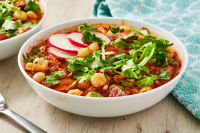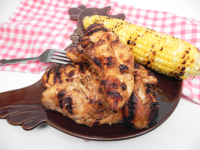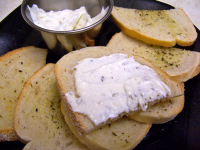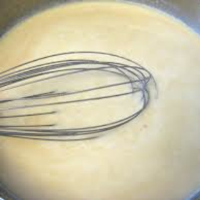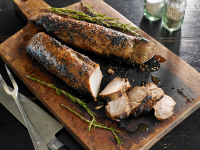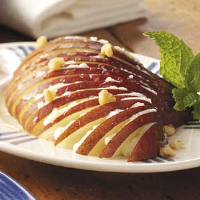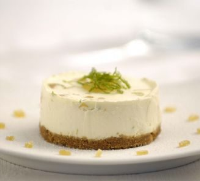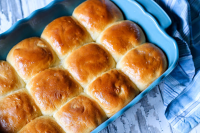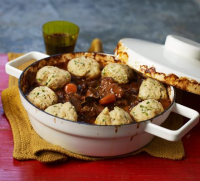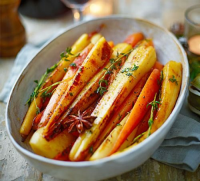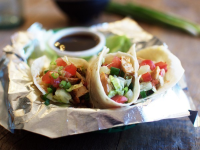PORTUGUESE EGG TARTS RECIPE | BON APPÉTIT
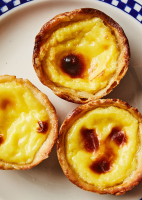
Check out this recipe for homemade Portuguese egg tarts, also known as pastel de nata. You can make the creamy, custardy treat with an earth-shattering crust in a muffin pan!
Provided by Rick Martinez
Yield Makes 12
Number Of Ingredients 12
Steps:
- Using your hands, mix salt, 1 cup flour, and ½ cup water in a large bowl until a shaggy dough forms. Knead until dough is elastic but still very sticky, about 5 minutes (alternatively, beat on medium speed in a stand mixer fitted with the paddle attachment until dough pulls away from sides of bowl, about 3 minutes). Wrap in plastic and let sit 30 minutes to relax gluten.
- Make sure your butter is softened to the consistency of sour cream (you can put it in a bowl and give it a stir). Generously flour (really, use a lot of flour) a clean work surface. Place dough on surface and dust with flour; lightly coat rolling pin with flour. Roll dough out to a 12" square (it will be quite thin), flouring surface as needed to prevent dough from sticking.
- Brush excess flour off dough. Imagine dough is made up of 3 equal columns. Using a small rubber spatula, spread 2½ Tbsp. butter over the left and center columns, leaving a ½" border around the edges (it should look like a slice of toast that’s been buttered on the left two-thirds). Lift up the right, unbuttered column and fold it over the middle column, then fold the far left column over the middle, as though you were folding a letter into thirds. Rotate dough 90° counterclockwise; the sides and top edge will be open.
- Generously flour work surface and dough. Roll out again to a 12" square. Repeat buttering and folding process. Again rotate folded dough 90° counterclockwise, flouring surface as needed. Roll dough out a third time to a 12" square (it’s worth it; we promise!). Spread remaining butter over surface of dough, leaving a ½" border. Starting with the long side closest to you, tease up edge of dough with a bench scraper and tightly roll it away from you into a log, brushing excess flour from the underside as you go. This dough is very forgiving—if there are any small holes, don't worry about it. When you get to the end, wet edge of dough just before you roll it so that it sticks. Trim both ends to clean up the edges, cut log in half crosswise, then wrap both pieces in plastic wrap (you should have two 6" logs). Chill 1 log at least 3 hours; transfer remaining log to freezer for another use (this amount of dough makes enough for 24 tarts; freeze the extras for your future crispy tart needs).
- Do Ahead: Dough can be made 1 day ahead; keep chilled, or freeze up to 3 months.
- Peel zest from one half of lemon into wide strips with a vegetable peeler, leaving white pith behind; set aside. Bring cinnamon, sugar, and ¼ cup water to a boil in a small saucepan fitted with candy thermometer over medium-high heat. Cook, swirling pan occasionally, until thermometer registers 225°. Remove from heat and stir in reserved lemon peel. Let sugar syrup sit 30 minutes.
- Position a rack in top third of oven; preheat to 500°. Place a rimmed baking sheet in oven to heat.
- Whisk flour, salt, and ½ cup milk in a medium bowl until combined and no lumps remain. Heat remaining 1 cup milk in a large saucepan over medium-high until it begins to boil, about 5 minutes. Remove from heat and whisk into flour mixture. Return mixture to saucepan over medium heat and cook, stirring occasionally, until thick, creamy, and smooth, about 5 minutes.
- Strain sugar syrup through a fine-mesh sieve into hot milk mixture and whisk to combine. Whisk in egg yolks and vanilla.
- Cut chilled dough crosswise into twelve ½"-thick slices. Place 8 slices on a plate and chill; place remaining 4 dough slices in 4 cups of a standard 12-cup muffin pan. Using your thumb, firmly press the center each piece against bottom of cup, forming a wall of dough around your thumb. Using your thumbs and fingers, press edges of dough against sides of cup, turning pan as you go, until dough comes halfway up sides of cup and is about 1/16" thick (or as thin as you can get it). Repeat twice more with remaining dough slices.
- Fill each pastry shell with about 2 Tbsp. filling (it should come about three-fourths of the way up the sides). Try not to get any on the pan itself; it may burn and stick during baking.
- Carefully place muffin pan on heated baking sheet in oven and bake tarts until custard is slightly puffed and browned in spots, and crust is golden brown and bubbles of melted butter are popping around it, 14–16 minutes. Let cool 10 minutes in pan, then carefully transfer each tart to a wire rack with an offset spatula. Let cool 20 minutes before serving.
PORTUGUESE CUSTARD TARTS (PASTEIS DE NATA) | ALLRECIPES
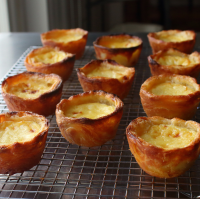
This slightly streamlined recipe for the world-famous pasteis de nata, or Portuguese custard tarts, uses just few basic ingredients but requires numerous steps and a certain amount of finesse. The results are so worth it, though, you'll want to make a double batch. The extra moisture inside the sticky dough, activated by a very hot oven, creates the signature flaky, buttery, crispy crust, which encases a custard subtly scented with lemon, cinnamon, and vanilla.
Provided by Chef John
Categories World Cuisine European Portuguese
Total Time 4 hours 0 minutes
Prep Time 1 hours 0 minutes
Cook Time 25 minutes
Yield 12 tarts
Number Of Ingredients 14
Steps:
- Combine flour, salt, and cold water in a bowl. Mix with a wooden spoon until dough just comes together and pulls away from the sides of the bowl. Dough should be sticky; adjust with more flour or water to achieve what's shown in the video.
- Transfer dough onto a well floured surface. Dust a little more flour over the top. Knead for a minute or two to form a round. Cover and let rest for 15 to 20 minutes.
- Roll dough into a square about 1/8 inch thick, dusting with flour as necessary; dough should still be sticky.
- Spread 1/3 of the butter over 2/3 of the square using a silicone spatula, leaving a 1/2 inch border. Flip the unbuttered side over the middle of the square and fold the opposite end over it like a letter. Straighten the edges as needed.
- Turn dough with a bench scraper to unstick it from the counter; dust with flour. Flip and sprinkle more flour on top. Roll dough into a 1/8-inch-thick rectangle, carefully stretching edges as needed. Spread another 1/3 of the butter over 2/3 of the dough. Fold into thirds. Transfer onto a lined baking sheet and freeze until butter is slightly chilled, about 10 minutes.
- Sprinkle dough with flour and roll into a square a little over 1/8 inch thick. Spread remaining butter over the dough, leaving a 1- to 1 1/2-inch border on the top edge. Dip your finger in water and lightly moisten the unbuttered edge. Roll dough into a log starting from the bottom edge. Dust with more flour and polish the ends as needed. Seal with plastic wrap and refrigerate at least 2 hours, preferably overnight.
- Combine sugar, 1/4 cup plus 1 tablespoon water, cinnamon, and lemon zest in a pot. Boil over medium heat, without stirring, until syrup reaches 210 to 215 degrees F (100 degrees C). Remove from heat.
- Preheat oven 550 degrees F (288 degrees C). Grease a 12-cup muffin tin.
- Whisk flour, salt, and cold milk together very thoroughly in a cold pot. Cook over medium heat, whisking constantly, until milk thickens, about 5 minutes. Remove from heat and let cool for at least 10 minutes.
- Whisk egg yolks into the cooled milk. Add the sugar syrup and vanilla extract. Mix until combined. Strain custard into a glass measuring cup.
- Unwrap the dough and trim any uneven bits on the ends. Score log into 12 even pieces using a knife; cut through.
- Place a piece of dough in each muffin cup. Dip your thumb lightly in some cold water. Press thumb into the center of the swirl; push dough against the bottom and up the sides of the cup until it reaches least 1/8 inch past the top. Fill each cup 3/4 of the way with custard.
- Bake in the preheated oven until the pastry is browned and bubbly, and the tops start to blister and caramelize, about 12 minutes. Cool tarts briefly and serve warm.
Nutrition Facts : Calories 210.2 calories, CarbohydrateContent 25.2 g, CholesterolContent 125.2 mg, FatContent 10.6 g, FiberContent 0.6 g, ProteinContent 3.9 g, SaturatedFatContent 6.1 g, SodiumContent 98.3 mg, SugarContent 14.1 g
More about "portuguese egg tart calories recipes"
PORTUGUESE CUSTARD TARTS - AUSTRALIAN EGGS: RECIPES ...
Talk about next-level. Learn how to make Portuguese Custard Tarts with this delicious recipe from Australian Eggs.
From australianeggs.org.au
Reviews 3.8
Total Time 45 minutes
Category Desserts, Vegetarian
Calories 171 calories per serving
From australianeggs.org.au
Reviews 3.8
Total Time 45 minutes
Category Desserts, Vegetarian
Calories 171 calories per serving
- Transfer to a glass bowl and cover surface with plastic wrap (to prevent a skin from forming). Set aside to cool then refrigerate for up to 3 days.
See details
PORTUGESE CUSTARD TARTS | BBC GOOD FOOD
My version of the yummy traditional tarts found in Portugal
From bbcgoodfood.com
Reviews 4
Total Time 1 hours
Cuisine Portuguese
From bbcgoodfood.com
Reviews 4
Total Time 1 hours
Cuisine Portuguese
- Spoon in the cooled custard and bake for 20-25mins until golden on top. Leave to cool in the tin for 5mins then move to a cooling rack to finish cooling although they can be eaten warm.
See details
PORTUGUESE EGG TART: DIRECTIONS, CALORIES, NUTRITION ...
Sep 10, 2020 · Description. Portuguese Egg Tart: 24 servings, 181 minutes prep time. Get directions, 230 calories, nutrition info & more for thousands of healthy recipes.
From fooducate.com
From fooducate.com
See details
HOMEMADE - PORTUGUESE CUSTARD EGG TART CALORIES, CARBS ...
Find calories, carbs, and nutritional contents for Homemade - Portuguese Custard Egg Tart and over 2,000,000 other foods at MyFitnessPal
From myfitnesspal.com
From myfitnesspal.com
See details
PORTUGUESE EGG TART RECIPE | TASTING TABLE
Aug 17, 2017 · Wrap in plastic wrap and refrigerate until very firm, at least 2 hours, preferably overnight. Make the filling: Preheat the oven to 500°. In a medium saucepan, combine the sugar, water and ...
From tastingtable.com
From tastingtable.com
See details
CO-OP - PORTUGUESE EGG TART CALORIES, CARBS & NUTRITION ...
Find calories, carbs, and nutritional contents for Co-op - Portuguese Egg Tart and over 2,000,000 other foods at MyFitnessPal
From myfitnesspal.com
From myfitnesspal.com
See details
PORTUGUESE EGG TARTS RECIPE (PASTÉIS DE NATA) | KITCHN
Oct 29, 2021 · Place the zest, 1 1/3 cups granulated sugar, 2/3 cup water, and 1 cinnamon stick in a small saucepan. Bring to a boil over medium-high heat. Simmer, swirling pan occasionally but not stirring, until thickened to the consistency of syrup, about 3 1/2 minutes. Measure out 7 fluid ounces of the syrup and set aside.
From thekitchn.com
From thekitchn.com
See details
BEST PORTUGUESE EGG TARTS RECIPE - LETSCOOKPARE #1 RECIPE
May 28, 2020 · 8 pcs egg tart shells frozen; 2 pcs egg yolks; 30 grams caster/white sugar; 65 grams fresh milk; 125 grams whipping cream at least 34% fat
From letscookpare.com
From letscookpare.com
See details
ORIGINAL PORTUGUESE CUSTARD EGG TART RECIPE (PASTÉIS DE ...
Nov 18, 2019 · How to Make Portuguese Custard Tart Filling: Start by Preheating the oven to 500°F. In a medium saucepan, add the sugar, water and cinnamon stick and cook over high heat. Once the sugar mixture comes to a boil, continue to cook for 1 minute then remove pot from heat and set aside.
From gimmeyummy.com
From gimmeyummy.com
See details
EGG TARTS RECIPE - THE SPRUCE EATS
Jul 22, 2021 · Egg tarts have a unique history in both Asian and Portuguese cuisine. The Portuguese version of egg tarts have a scorched, caramelized exterior. A version of this caramelized egg tart can also be seen on menus in Macau, and just a short boat ride away is Hong Kong where egg tarts can also be found on local menus.
From thespruceeats.com
From thespruceeats.com
See details
PORTUGUESE EGG TARTS (THE BEST RECIPE!) - RASA MALAYSIA
Preheat oven to 400°F (207°C). Butter the muffin pan. Flatten the balls into small rounds and fit them well into the muffin pan by pressing firmly on bottom and side (do not over stretch). Fill the pie crust dough with the egg mixture (about 80% full). Bake the Portuguese Egg Tarts at 400F for about 15-20 minutes or until the filling turn brown.
From rasamalaysia.com
From rasamalaysia.com
See details
BEST PORTUGUESE EGG TARTS RECIPE - LETSCOOKPARE #1 RECIPE
May 28, 2020 · History: Portuguese Egg Tarts or pastéis de nata were created before the 18th century by Catholic monks at the Hieronymites Monastery (Portuguese: Mosteiro dos Jerónimos) in the civil parish of Saint Mary of Bethlehem, in Lisbon. At the time, convents and monasteries used large quantities of egg-whites for starching clothes, such as friars and nuns’ religious habits.
From letscookpare.com
From letscookpare.com
See details
ORIGINAL PORTUGUESE CUSTARD EGG TART RECIPE (PASTÉIS DE ...
Nov 18, 2019 · Instructions on How to Make Portuguese Custard Tart Filling: Start by Preheating the oven to 500°F. In a medium saucepan, add the sugar, water and cinnamon stick and cook over high heat. Once the sugar mixture comes to a boil, continue to cook for 1 minute then remove pot from heat and set aside.
From gimmeyummy.com
From gimmeyummy.com
See details
PASTEL DE NATA (PORTUGUESE EGG TART) - EASY AND DELISH
Jun 02, 2021 · Pastel de nata (or Portuguese egg tart) is a 19 th century small tart with a crispy puff pastry crust and a custardy pastry cream filling, presenting caramelized spots on top. This is the shortcut or easy dessert recipe that cuts the prep time quite a bit yet it tastes like the traditional treat.
From easyanddelish.com
From easyanddelish.com
See details
ARE EGG TARTS HEALTHY? (5 TIPS FOR WEIGHT LOSS) — ASPIRE ...
The crust of a typical Hong Kong style egg tart is what contains the most amount of calories as many recipes call for around 200 grams per 200 grams of flour. ( 1 ) This means that there is a 1:1 ratio between carbs and fats in this dish so eating a lot can really add up in the calories.
From aspirefitnesswalnut.com
From aspirefitnesswalnut.com
See details
PORTUGUESE CUSTARD TARTS (PASTEIS DE NATA) - THE WOKS OF LIFE
Mar 22, 2019 · Make the custard tart filling: Whisk ½ cup heavy cream, ½ cup sugar, 1¼ cup whole milk, 2 egg yolks, 4 teaspoons cornstarch, and 1¼ teaspoon vanilla extract in a small saucepan until the sugar is dissolved. Place over medium-low heat, continuing to whisk until the mixture begins to coat the sides of the pan.
From thewoksoflife.com
From thewoksoflife.com
See details
PASTÉIS DE NATA (PORTUGUESE CUSTARD TARTS) - THE DARING ...
Dec 22, 2020 · Pastéis de Nata Recipe Crispy-crunchy pastry crust with a smooth and creamy custard filling is what awaits your bite into these traditional, world famous sweet custard tarts from Lisbon, Portugal!. On our most recent trip to Lisbon, Portugal we made it a point to sample (as many as we could fit!) the city’s famous pastry that The Guardian designated as among the world’s “50 best things ...
From daringgourmet.com
From daringgourmet.com
See details
PORTUGUESE CUSTARD TARTS - PINCH OF NOM
This Portuguese Custard Tarts recipe is perfect if you’re following a calorie controlled diet and fits well with any one of the major diet plans such as Weight Watchers. As a guide, an average man needs around 2,500kcal (10,500kJ) a day to maintain a healthy body weight.
From pinchofnom.com
From pinchofnom.com
See details
EGG TART RECIPE (HYBRID OF HONG KONG DIM SUM & PORTUGUESE ...
Mar 28, 2021 · For Hong Kong egg tart fillings, you typically use whole eggs and sweeten it with a simple syrup while Portuguese egg tarts include egg yolks, white sugar, and cinnamon. For this recipe, I stuck with egg yolks, evaporated milk, and sweetened with condensed milk to give it a sugary but custard-like body.
From hungryhuy.com
From hungryhuy.com
See details














